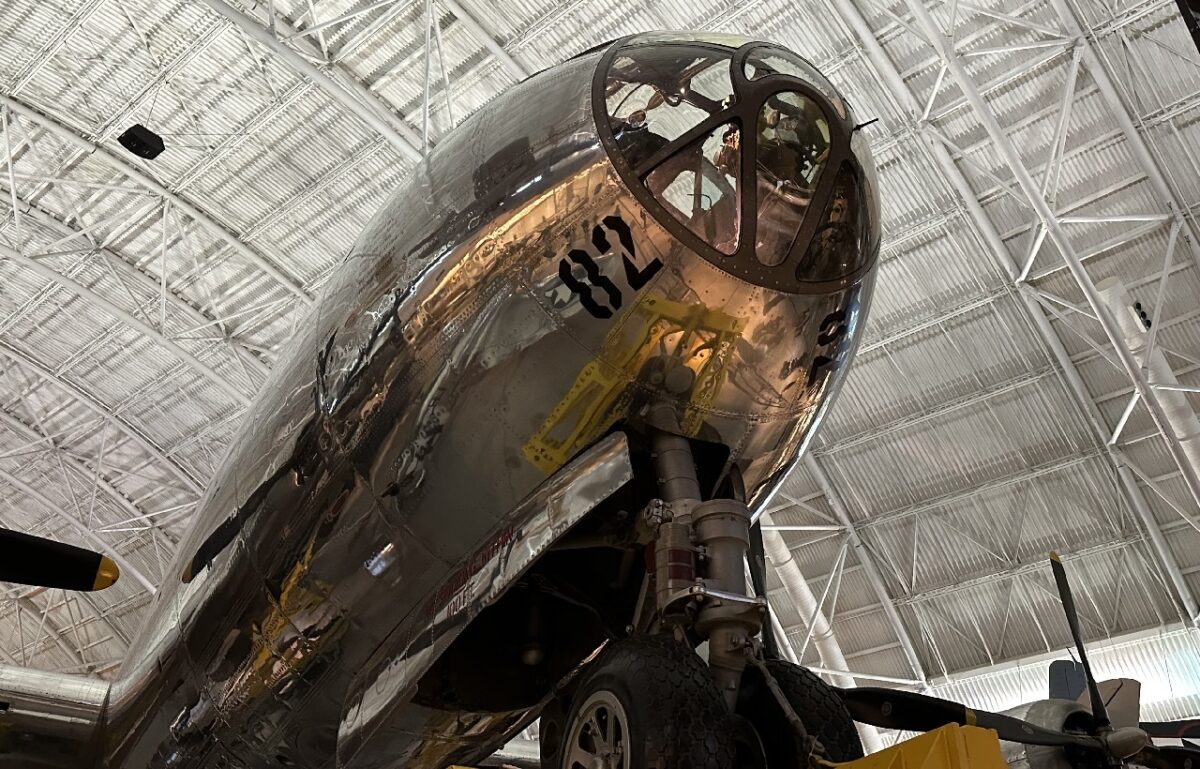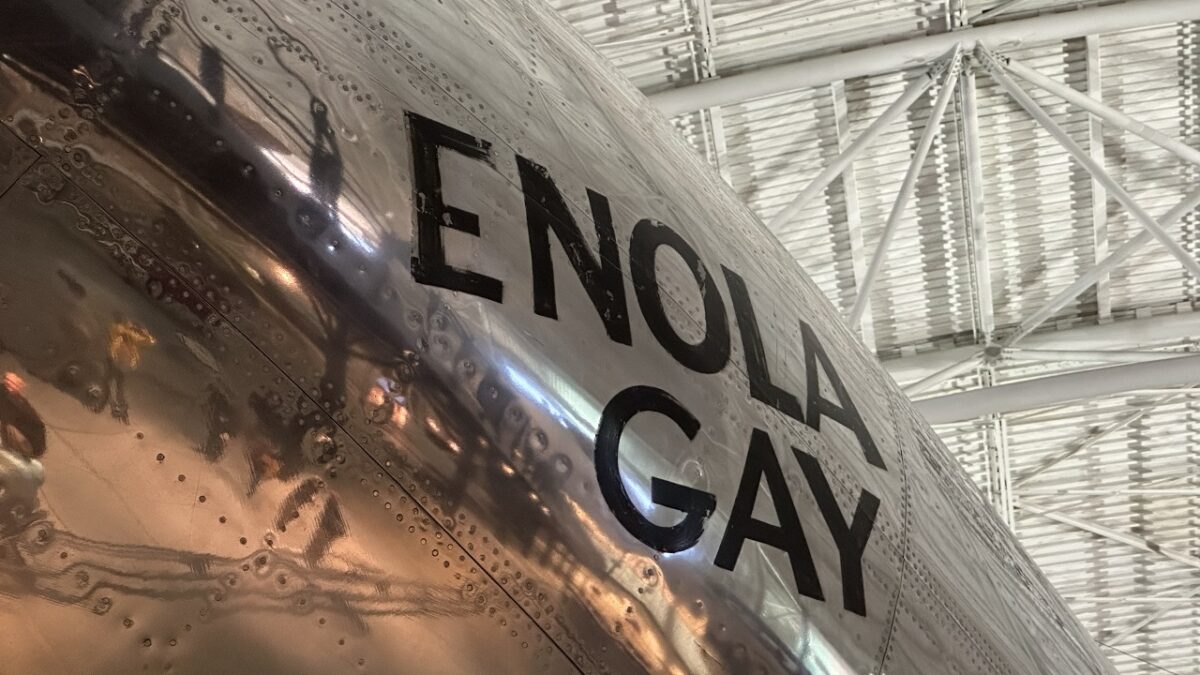On October 1, 2022, the 19FortyFive.com team went to the National Air and Space Museum to take fresh footage and photos of some of the most amazing planes on Earth. We were lucky to get right up close to the SR-71, Bell X-1, X-35, and the NASA Discovery Space Shuttle. But no visit to this incredible museum would be complete unless we got as close as we could to the B-29 Enola Gay. Yes, that is the bomber that dropped the very first nuclear weapon in anger. We have some really interesting original video and photos below.
Meet the Enola Gay:
With talk of the potential use of nuclear weapons by Russia in Ukraine, it is illustrative to examine the original nuclear attacks on Japan and the famous airplane that took part in both nuclear bombing missions. Seventy-seven years ago, the Enola Gay, a B-29 bomber, dropped the first nuclear device on Hiroshima, an act that unleashed the nuclear age. The Enola Gay changed how we viewed warfare, and it provided a horrifying use case of the atomic bomb’s power.
Special Airplane for Special Mission
The Enola Gay B-29 was built for the purpose of nuclear war. It was manufactured in 1945 with silver plates to guard against nuclear fallout. Protections against conventional munitions were removed to save weight to carry a 10,000-pound bomb. Gun turrets were eliminated to make the airplane lighter – only a tail gunner remained for the defense of the bomber.
Before it received its memorable nickname, the airplane was originally dubbed the Number 82. Pilots flew it to New Mexico and then on to Tinian in the Mariana Islands where the crew rehearsed loading a device and then flew practice flights for the bombing run.
How Did the Enola Gay Get Its Name?
Colonel Paul Tibbets Jr. selected Number 82 and renamed it Enola Gay after his mother. Soon it was time for the real mission that would change everything. On August 6, 1945, Enola Gay took the 10,000-pound uranium-enriched bomb to Hiroshima. The flight had seven airplanes with two observation aircraft. A crew member armed the device in the bomb bay. The Enola Gay was flying at 26,000 feet. When reaching the target, the bombardier dropped the 10-foot-long bomb, and it exploded 1,800 feet above the city with a force of 15,000 to 20,000 tons of TNT. It created a temperature of at least a million degrees Celsius and a huge fireball 840 feet wide.
The Japanese Tried to Warn the Citizens
An unknown aspect of the flight was that the Japanese radar picked up the airplanes and tried to warn the inhabitants of the city. But many ignored the warning. The mission was to aim for a bridge near the center of the city. When Little Boy burst, 80 to 140,000 people immediately perished. One hundred thousand were wounded and tens of thousands would die in the coming weeks due to radiation exposure. The blast registered as far as 37 miles away. It blew up two-thirds of Hiroshima’s structures. While reacting to the unleased horror, the Enola Gay’s co-pilot, Captain Robert Lewis, asked, “My God, what have we done?”

Enola Gay B-29. Image was taken on October 1, 2022. Image Credit: 19FortyFive.com
Enola Gay Was on the Nagasaki Mission Too
The nuclear attack on Japan was not over. Three days later Nagasaki was bombed by Fat Man. Enola Gay did not drop that device, instead, a B-29 known as Bockscar did the deed. The Enola Gay was on that mission too, as a weather observation airplane that made sure the skies were clear for the bombing run. After Nagasaki, Enola Gay took part in the Bikini Atoll nuclear tests between 1946 and 1958.
Work to Restore It
The Enola Gay was retired and disassembled in 1960 and the components resided at Andrews Air Force Base after being donated to the Smithsonian. In 1984, workers began putting it back together in a restoration project that took 10 years. More detailed work ensued, and the airplane wasn’t fully ready for the public to see until 2003. It was finally put on display at the Air and Space Museum’s Udvar-Hazy Center in Chantilly, Virginia.

Enola Gay B-29. The image was taken on October 1, 2022. Image Credit: 19FortyFive.com
Expert Biography: Serving as 1945’s Defense and National Security Editor, Dr. Brent M. Eastwood is the author of Humans, Machines, and Data: Future Trends in Warfare. He is an Emerging Threats expert and former U.S. Army Infantry officer. You can follow him on Twitter @BMEastwood. He holds a Ph.D. in Political Science and Foreign Policy/ International Relations.








